Precision and optical synthesis are core to the aesthetic practice of Cole Pierce. There is a sensory geometry coupled with ocular encounter that establishes a plain of perception. This week the COMP Magazine headed up to the Northside to visit Pierce in studio to discuss what established his focus in painting, the conceptual and technical aspects that inform his practice, his relationship to the Op Art movement of the 1960s, and what is currently in progress in the studio at present.
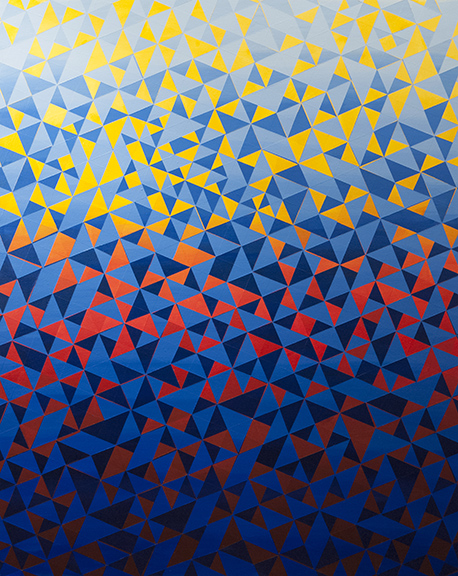
Cole Pierce, 88, acrylic on canvas, 60″x48″, 2015
Lets begin with identifying foundations. You are from Iowa and studied in the Art Theory and Practices program at Northwestern. What prompted you to focus upon painting? Are there any specific experiences that you see as laying the groundwork for your ongoing investigations?
My focus on painting evolved from my work in collage. I had an interdisciplinary practice and treated paint the same way that I used printmaking, transfer techniques and found materials. In grad school, my practice shifted into painting, but I was still “finding things” to make paintings. I used the textures of found objects to block print on canvas and experimented with other ways to apply paint. I made my first all-over pattern paintings, and pattern has become a consistent composition over the years. I was also working in video, sound and found object installation at the time, but shortly after grad school I started to narrow my focus on painting. Part of this change is because I needed a more predictable studio practice that fit in my busy life of being a parent and having a day job. Painting with a masking process requires repetitive labor, so there was always something to do in my studio. The shift to painting wasn’t only practical – the paintings seemed to click with the conceptual basis of my practice. In grad school I talked about making and finding flickering moments or little epiphanies. With this conceptual background, my practice gravitated toward geometric abstraction and optical painting.
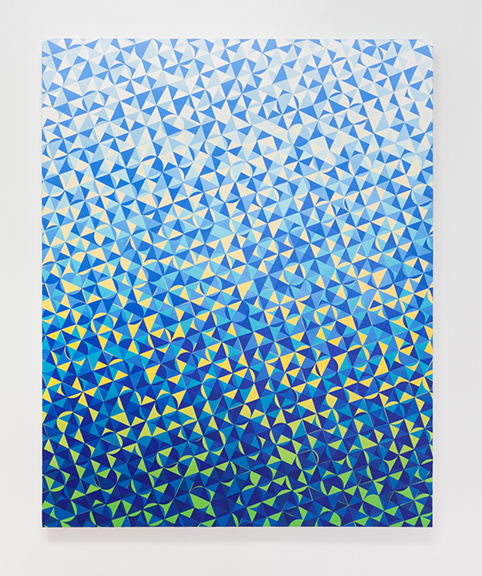
Cole Pierce, 101, acrylic on canvas, 60″x48″, 2016
Optics and pattern stand out as I look at and think about your practice. There’s a mathematical precision, almost machine-like in the appearance. What is the end goal in terms of conceptual intent?
Early on I was interested in juxtapositions like handmade vs machine made and analogue vs digital. I thought of them as comparisons or metaphors for analytical thinking vs emotional insight, like two different systems that don’t fit together. I like the tension that happens when I set the painting up to be a precise pattern and then undermine the rational system with inconsistencies. Brush marks are kept to a minimum and the masking process makes those nice clean lines. Imperfections in the grid, breakdowns in the patterns, and color palettes become the marks of the artist’s hand. In some of my work, I use multiple masking layers, which creates a buildup of paint and texture that adds to the sense of construction and the handmade.
When I started using the masking process, I realized that I had the patience to work with precision. I didn’t expect to enjoy the meditative aspect of the process, but it has become important to my practice and life in general. It helps that my studio is in a basement space of my apartment building, separate from my home but conveniently nearby.
Working in a grid format allows an amount of imperfection while maintaining a sense rational perfection. Over the past 10 years I’ve experimented with a variety of these imperfections. The progression has been intuitive and generative, one shape leading to another, one pattern or tessellation leading to other ideas. I’m fascinated with color gradients because they can make hard edge abstraction feel like a landscape or a natural phenomenon. I use gradients to give the painting a sense of gravity, to add mass to a genre that is usually weightless.
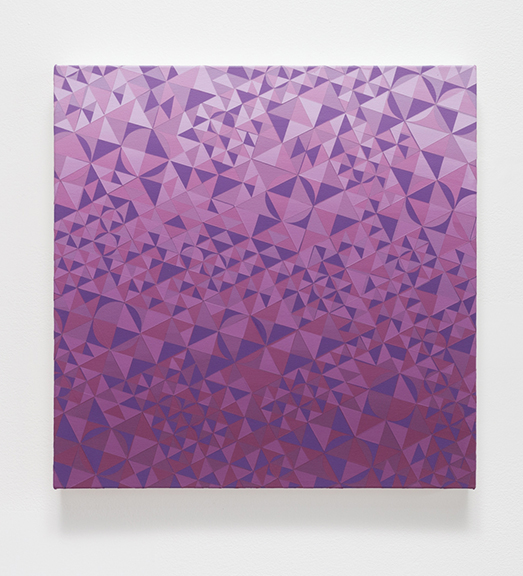
Cole Pierce, 110, acrylic on canvas, 24″x24″, 2016
You have been refining your process for some time. I am wondering if you walk us through your technical approach. Can you discuss your selection and application of color theory?
I use acrylics and a masking process on stretched canvas or panels. I usually have the color palette and general composition planned out beforehand. The process is a series of layers; one layer of paint, one layer of tape or masking vinyl sealed with acrylic medium, another layer of paint, remove the tape for the grand reveal. The process is formulaic but allows for plenty of wiggle room in its execution. For many years I cut the tape by hand before arranging it on the canvas. Vinyl tape works better than the paper based masking tape; there are less bleeds and can be reused for several layers. This process is quite repetitive and labor intensive and was taking its toll on my body, so last year I invested in a vinyl cutter. Now I design the shapes digitally and use an adhesive masking vinyl. The shapes are still placed one by one on the canvas, so other than speeding up my process it didn’t change the way I work. After the surface is taped off and sealed with medium, a second coat of paint is applied. After removing the tape, the painting might be finished. Sometimes I repeat the process several times to make a more complex pattern.
I experiment with a few different approaches to color strategies. In traditional Op Art fashion I use highly saturated contrasting colors. Some of my favorite work is when I manage to match up the values of contrasting colors in two different gradients. For color choices, I’ve found inspiration in sunsets. There was one particular sunset that I photographed during summer solstice in Iceland that inspired a series of paintings that use a mute yellow to peach to mute purple gradient. However, most of the time, I will obsess over one color and experiment with variations for several paintings. In these paintings I use an analogous color scheme and multiple layers of masking. Last year I started a new color strategy that is indebted to Josef Albers’ color theory experiments. I’ve been experimenting with two layers, one gradient of saturated colors and a second layer of mute gray gradients.
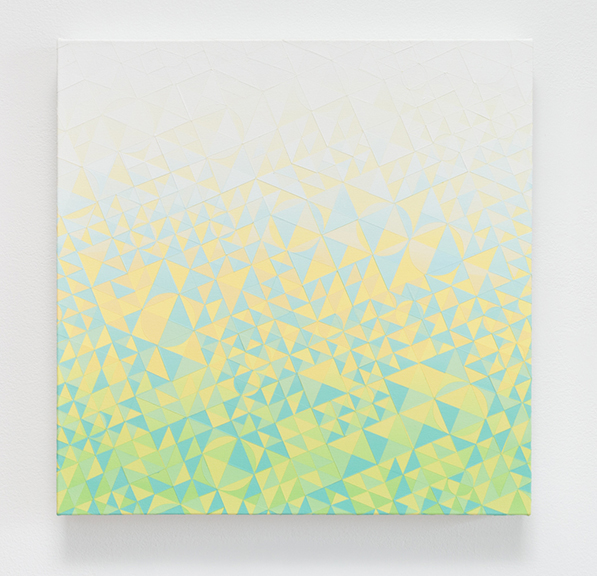
Cole Pierce, 111, acrylic on canvas, 24″x24″, 2016
From conversation, you are in a working stage, yet appear to be closing in on a time to exhibit work. What’s the plan for the remainder of 2018? Do you have any specific goals or upcoming exhibitions?
This November I have a solo exhibition at Mikookoo Gallery in Taipei City, Taiwan. We are still finalizing the dates, but in spring of 2019, I have a show at Free Range in Chicago, where I want to do a wall installation that has been in the back of my mind for a while. I’ll also be showing paintings in Lima, Peru this spring. As for studio goals, I plan to work with my new large shape compositions on large scale canvases.
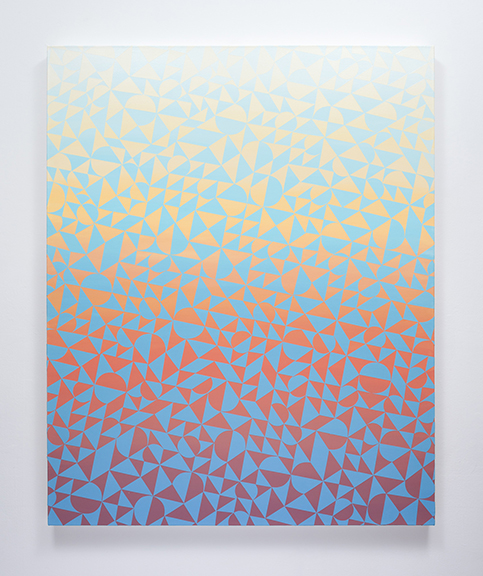
Cole Pierce, 130, acrylic on canvas, 60″x48″, 2016
For additional information on the aesthetic practice of Cole Pierce, Please visit:
Cole Pierce – http://www.colepierce.com/
Uprise Art – https://www.upriseart.com/discover/artists/cole-pierce
The Mission – https://themissionprojects.com/artist/colepierce
LVL3 – http://lvl3official.com/artist-of-the-week-cole-pierce/
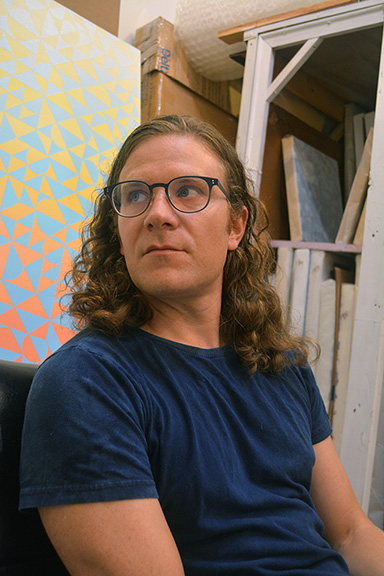
Cole Pierce, painter, Chicago, 2018
Additional paintings and a studio view by Cole Pierce:
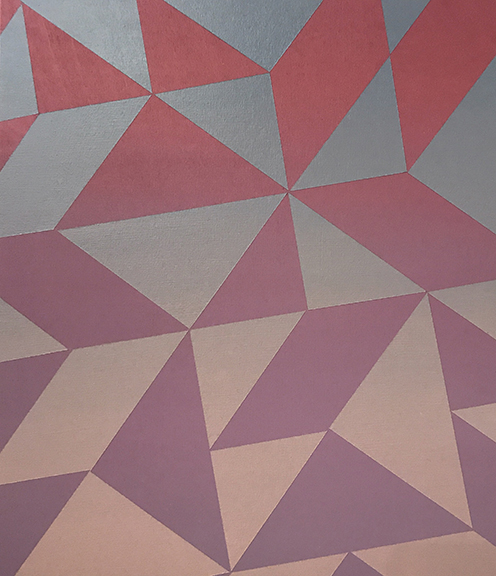
Cole Pierce, 166, acrylic on birch panel, 15″x13″, 2017
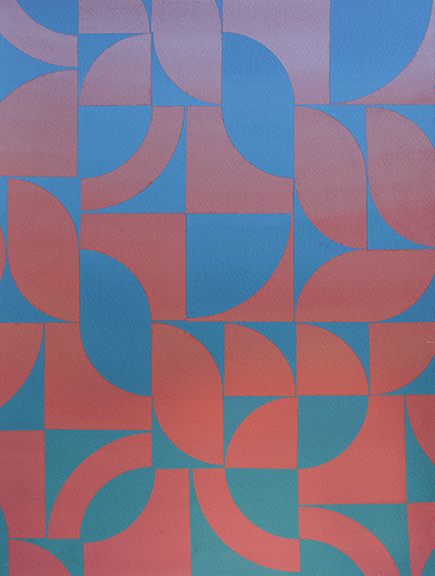
Cole Pierce, 187, Gouache on paper, 16″x12″, 2018
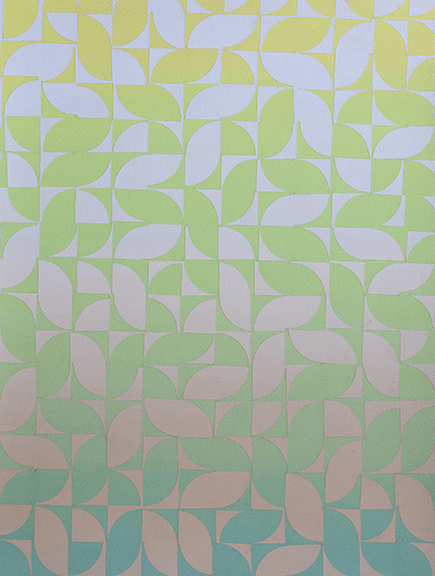
Cole Pierce, 191, Gouache on paper, 16″x12″, 2018
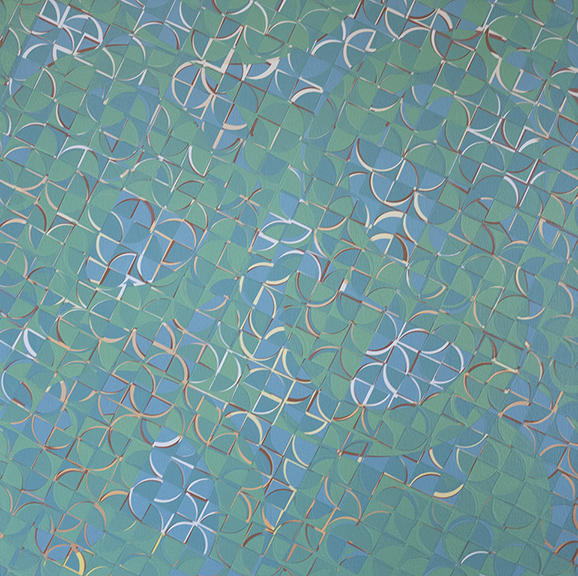
Cole Pierce, 197, acrylic on canvas, 24″x24″, 2018
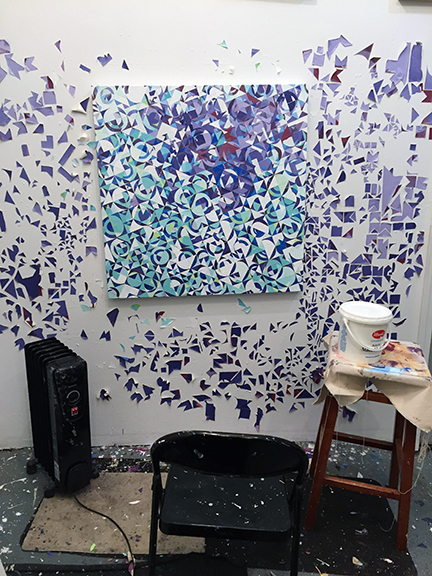
Cole Pierce, Works-in-Progress, Studio view, Chicago, 2017
Artist interview and portrait by Chester Alamo-Costello


